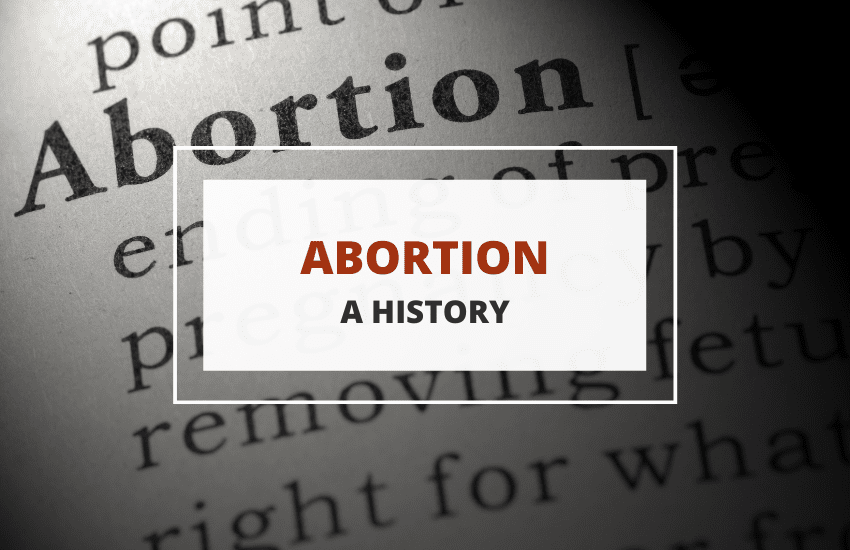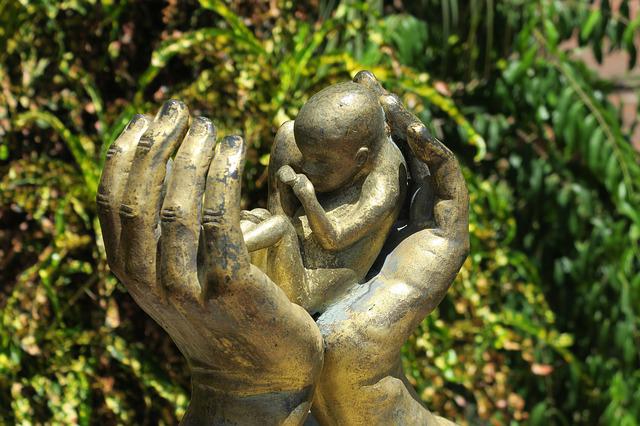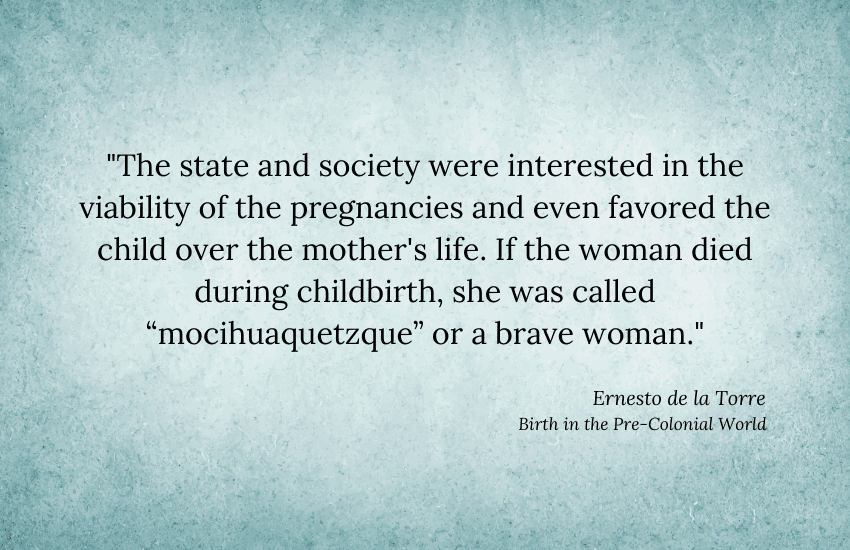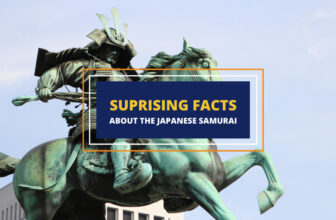
When it comes to controversial socio-political topics, few are as contentious as abortion. What sets abortion aside from many of the other hot-button questions is that it’s not exactly a new topic of discussion, compared to other issues such as civil rights, women’s rights, and LGBTQ rights, which are all fairly new to the political scene.
Abortion, on the other hand, is a topic that has actively been discussed for millennia and we still haven’t reached a consensus. In this article, let’s go over the history of abortion.
Abortion Around the World
Before we examine the situation in the US, let’s go over how abortion has been viewed around the world throughout history. A brief look shows that both the practice and the opposition to it are as old as humanity itself.
1. Abortion in the Ancient World

When talking about abortion in the premodern era, the question arises of how the practice was even done. Modern family planning facilities and medical centers utilize various advanced techniques and medicaments but in the ancient world, people used certain abortifacient herbs as well as more crude methods such as abdominal pressure and the use of sharpened tools.
The use of herbs is widely recorded in various ancient sources, including by many Greco-Roman and Middle Eastern authors such as Aristotle, Oribasius, Celsus, Galen, Paul of Aegina, Dioscorides, Soranus of Ephesus, Caelius Aurelianus, Pliny, Theodorus Priscianus, Hippocrates, and others.
Ancient Babylonian texts also talked about the practice, saying:
“To make a pregnant woman lose her fetus: …Grind Nabruqqu plant, let her drink it with wine on an empty stomach, and then her fetus will be aborted.”
The plant silphium was also used in Greek Cyrene while rue is mentioned in medieval Islamic texts. Tansy, cotton root, quinine, black hellebore, pennyroyal, ergot of rye, sabin, and other herbs were also commonly used.
The Bible, in Numbers 5:11–31 as well as the Talmud talk about the use of “bitter water” as an acceptable method for abortion as well as a test for a woman’s fidelity – if she aborts her fetus after drinking “water of bitterness”, she was unfaithful to her husband and the fetus wasn’t his. If she doesn’t abort the fetus after drinking the abortifacient water, then she was faithful and she’d carry on the pregnancy of her husband’s progeny.
Disclaimer
It’s also interesting that many ancient texts don’t talk about abortion directly but rather refer to methods for “returning a missed menstrual period” as a coded reference to abortion.
This is because even at that time, opposition to abortion was widespread.
The oldest known mentions of laws against abortion come from the Assyrian law in the Middle East, some ~3,500 thousand years ago, and the Vedic and Smriti laws of ancient India around the same time. In all these, as well as in the Talmud, the Bible, the Quran, and other later works, the opposition to abortion was always framed in the same way – it was seen as “bad” and “immoral” only when the woman did it on her own accord.
If and when her husband agreed with the abortion or requested it himself, then the abortion was viewed as a perfectly acceptable practice. This framing of the issue can be seen throughout history for the next several thousand years, including up to today.
2. Abortion in the Middle Ages

Unsurprisingly, abortion wasn’t viewed favorably in both the Christian and the Islamic worlds during the Middle Ages. Instead, the practice continued to be perceived just as it was described in the Bible and the Quran – acceptable when the husband wants it, unacceptable when the woman decides to do it on her own accord.
There were some important nuances, however. The most significant question was:
When did either religion or its numerous denominations think the soul entered the baby’s or fetus’ body?
This is crucial because neither Christianity nor Islam really viewed the act of removing a fetus as “an abortion” if it happened before the moment of “ensoulment”.
For Islam, traditional scholarship places that moment on the 120th day after conception or after the 4th month. A minority opinion in Islam is that ensoulment happens on the 40th day or just before the 6th week of the pregnancy is over.
In ancient Greece, people even differentiated between male and female fetuses. Based on Aristotle’s logic, males were believed to get their souls at 40 days and females – at 90 days.
In Christianity, there’s much variation based on the particular denomination we’re talking about. Many early Christians ascribed to Aristotle’s view.
However, over time, views began shifting and diverging. The Catholic Church eventually accepted the idea that ensoulment begins at conception. This view is mirrored by the Southern Baptist Convention while Eastern Orthodox Christians believe ensoulment happens after the 21st day of the pregnancy.

Judaism also continued to have varying views on ensoulment throughout the Middle Ages and to this day. According to Rabbi Dovid Feldman, while the Talmud ponders the question of ensoulment, it’s unanswerable. Some readings of old Jewish scholars and rabbis hint that ensoulment happens at conception, while others – that it happens at birth.
The latter view became especially prominent after the Second Temple period of Judaism – the return of the Jewish exiles from Babylon between 538 and 515 BCE. Since then, and throughout the Middle Ages, most followers of Judaism accepted the view that conception happens at birth and therefore abortion is acceptable at any stage with the husband’s permission.
There are even interpretations that ensoulment happens later after birth – once the child answers “Amen” for the first time. Needless to say, this view led to even more friction between Jewish communities with Christians and Muslims during the Middle Ages.
In Hinduism, views also varied – according to some, ensoulment occurred at conception as that’s when the human soul was reincarnated from its previous body into its new one. According to others, ensoulment transpired at the 7th month of the pregnancy, and before that the fetus is just a “vessel” for the soul that’s about to reincarnate into it.
All this is important in regard to abortion because each of the Abrahamic religions viewed abortion as acceptable if it occurred before ensoulment and completely unacceptable at any point after that.

Typically, the moment of “quickening” was taken as a turning point. The quickening is the moment the pregnant woman starts feeling the child moving inside her womb.
Rich noblemen had little trouble going around such rules and ordinary people used the services of midwives or even just well-informed common folk with basic knowledge of herbalism. While this was obviously frowned upon by the church, neither the church nor the state really had a consistent way to police these practices.
While discussing the perspectives on abortion in the Middle Ages within Christianity, Islam, and Judaism, it’s crucial to recognize the diversity and evolution of views within these religions. The interpretations and teachings about abortion have varied significantly over time and across different denominations and schools of thought within each religion. This complexity underscores the nuanced and evolving religious understandings of abortion throughout history.
3. Abortion Throughout the Rest of The World
Documentation is often scarce when it comes to abortion practices outside of Europe and the Middle East from ancient times. Even when there’s written evidence, it’s usually contradictory and historians rarely agree on its interpretation.
3.1 China
In Imperial China, for example, it seems that abortions, especially through herbal means, weren’t prohibited. Instead, they were viewed as a legitimate choice a woman (or a family) could make. However, views differ in terms of how readily available, safe, and reliable these methods were. Some historians believe this was a widespread practice while others maintain it was something reserved for health and social crisis, and usually just for wealthy people.
Whatever the case, in the 1950s, the Chinese government made abortion officially illegal for the purpose of emphasizing population growth. These policies were later softened, however, until abortion was once again viewed as a permitted family planning option in the 1980s after the drastically increased rate of female deaths and lifelong injuries from illegal abortions and unsafe births.
3.2 Japan
Japan’s history with abortion was similarly turbulent and not fully transparent to that of China. However, the two countries’ mid-20th century went on different paths.
Japan’s Eugenics Protection Law of 1948 made abortion legal for as long as 22 weeks after conception for women whose health was endangered. Just a year later, the decision also included the woman’s economic welfare, and three more years later, in 1952, the decision was made entirely private between the woman and her physician.
Some conservative opposition to legalized abortion began appearing in the following decades but has been unsuccessful in attempts to curtail abortion laws. Japan is recognized to this day for its abortion acceptance.
3.3 Pre- and post-colonial Africa
Evidence of abortion in pre-colonial Africa is difficult to come by, especially considering the vast differences between many of Africa’s societies. Most of what we’ve seen, however, indicates that abortion was widely normalized in the hundreds of sub-Saharan and pre-colonial African societies. It was performed mostly through herbal means and was commonly initiated by the woman herself.
In post-colonial times, however, this began changing in many African countries. With both Islam and Christianity becoming the two dominant religions on the continent, many countries switched to the Abrahamic views on abortion as well as contraception.
3.4 Pre-colonial Americas
What we know of abortion in pre-colonial North, Central, and South America is as varying and contradictory as it is fascinating. As with the rest of the world, pre-colonial Native Americans were all familiar with the use of abortifacient herbs and concoctions. For most North American natives, the use of abortion seems to have been available and decided on a case-by-case basis.
In Central and South America, however, things seem more complicated. The practice was present there since ancient times too, but how accepted it was likely varied a lot based on the particular culture, religious views, and the current political situation.
Most Central and South American cultures viewed childbirth as so essential for the life and death cycle that they didn’t look favorably at the idea of pregnancy termination.

As Ernesto de la Torre says in Birth in the Pre-Colonial World:
The state and society were interested in the viability of the pregnancies and even favored the child over the mother’s life. If the woman died during childbirth, she was called “mocihuaquetzque” or a brave woman.
At the same time, as was the case everywhere else around the world, wealthy and noble people didn’t live up to the rules they placed upon others. Such is the infamous case of Moctezuma Xocoyotzin, the last ruler of Tenochtitlan, who is said to have impregnated around 150 women just prior to European colonization. All 150 of them were later forced to have abortions for political reasons.
Even outside of the ruling elite, however, the norm was that when a woman wanted to terminate a pregnancy, she almost always managed to find a way to do it or at least attempt it, whether the society around it endorsed such an attempt or not. The lack of wealth, resources, legal rights, and/or a supportive partner weighed on the safety of the procedure but rarely dissuaded the affected woman.
Abortion – Legal Since Before the US Existed
The above picture drawn by the rest of the world applied to post-colonial America as well. Both Native American and European women had wide access to abortion methods before the Revolutionary War and post 1776.
In that sense, abortion was perfectly legal during the birth of the United States even though it obviously went against the religious laws of most churches. As long as it was done before the quickening, abortion was largely accepted.
Of course, as with all other laws in the US at the time, that didn’t apply to all Americans.
Black Americans – The First for Whom Abortion Was Criminalized
While white women in the US had relative freedom of abortion practices as long as the religious communities around them didn’t impose their will upon them, African American women didn’t have that luxury.
As slaves, African American women literally didn’t own their bodies and had no right to abortion. Whenever they became pregnant, regardless of who the father was, it was the slave master who “owned” the fetus and decided what would happen to it.
Most of the time, the woman was forced to give birth to a child in slavery as yet another “piece of property” for her white owner. The rare exceptions occurred when the white owner had raped the woman and was the father of the child. In these cases, the slave owner might have desired an abortion to hide his adultery.
Even once slavery ended in 1865, society’s control over black women’s bodies remained. It was around this time that the practice began to be criminalized nationwide.
Banned Nationwide

The US didn’t ban abortion overnight, but it was a relatively fast transition. The incentive for such a legislative turn occurred between 1860 and 1910. There were several driving forces behind it:
- The male-dominated medical field wanted to wrestle control in the reproductive field from midwives and nurses.
- Religious lobbies didn’t view the quickening as an acceptable timeframe for the termination of pregnancies as most Catholic and Protestant churches at the time believed ensoulment happened at conception.
- The abolition of slavery coincided with the push against abortion and acted as unintentional motivation for it as white Americans suddenly felt that their political power was threatened with the 14th and 15th Constitutional Amendments giving former slaves the right to vote.
So, the wave of abortion bans began with several states banning the practice altogether in the 1860s and culminated with a nationwide ban in 1910.
Abortion Law Reform

Anti-abortion laws took about half a century to take hold in the US and another half century to dismantle.
Thanks to the efforts of the Women’s Rights Movement, the 1960s saw 11 states decriminalize abortion. Other states followed suit soon after and in 1973 the Supreme Court established abortion rights nationwide once again with the passing of Roe v. Wade.
As usual in US politics, multiple restrictions still remained for black Americans and other people of color. A big example of that is the infamous Hyde Amendment of 1976. Through it, the government prevents federal Medicaid funds from being used for abortion services even if the woman’s life is at risk and her doctor recommends the procedure.
A few niche exceptions were added to the Hyde Amendment in 1994 but the legislation remains active and prevents people in the lower economic brackets, who rely on Medicaid, from having safe abortion services.
Modern Challenges

In the US as well as throughout the rest of the world, abortion continues to be a major political issue to this day.
According to the Center for Reproductive Rights, only 72 countries in the world allow abortion on request (with some variance in gestation limits) – that’s Category V abortion laws. These countries are the home of 601 million women or ~36% of the world’s population.
Category IV abortion laws allow abortion under a specific set of circumstances, usually health- and economic-based. Again, with some variation in what these circumstances are, about 386 million women live in countries with Category IV abortion laws right now, amounting to 23% of the world’s population.
Category III abortion laws allow for abortion only on medical grounds. This category is the law of the land for about 225 million or 14% of women in the world.
Category II laws make abortion legal only in the case of a life-or-death emergency. This category is applied in 42 countries and encompasses 360 million or 22% of women.
Lastly, some 90 million women or 5% of the world’s population live in countries where abortion is completely prohibited, regardless of any circumstances or danger to the mother’s life.
In short, in only about a third of the world today, do women have full control over their reproductive rights? And there is no certainty whether the percentage is going to rise or fall in the near future.
In the US, for example, the legislatures in several majority conservative states have continued taking active steps in restricting abortion rights to women there, despite Roe v. Wade still being the law of the land.
The controversial Senate Bill 4 in the state of Texas, signed by governor Abbott in 2021, found a loophole in the federal law by not banning abortion directly but banning the act of providing abortion assistance to women after the 6th week of pregnancy. The 6-3 majority conservative US Supreme Court refused to rule on the bill at the time and allowed other states to copy the practice and place further limits on abortions.
All this means that the future of abortion both in the US and abroad is still very much up in the air, making it one of the oldest political issues in the history of humanity.
Interested in learning more about women’s rights? Check out our articles on Women’s Suffrage and the History of Feminism.








